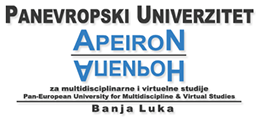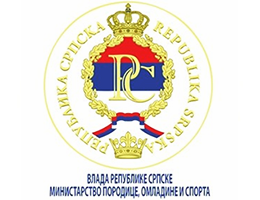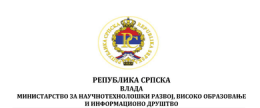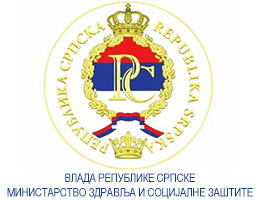Urinary Incontinence and the Effects of Kegel Exercises for Pelvic Muscles
Volume 5, Issue 1 (2015)
Volume 5, Issue 1 (2015)
Urinary Incontinence and the Effects of Kegel Exercises for Pelvic Muscles
Abstract:
The aim of research was to prove the effectiveness of programs Kegel exercises in treatment of mild to moderate stress urinary incontinence in women.The study included 43 patients treated in specialist outpatient consultative Public Health Institution Health Center Laktaši. The patients were taken: general data, body mass index, gynecological history, social history, all patients underwent gynecological examination on the day of occurrence in consultative specialist clinic, estimated defect of the front wall vagina to POP-Q classification. Better success in the treatment of urinary incontinence in women were achieved in the pre and perimenopausal stages in comparison to postmenopausal stage. In 14 (35%) patients did not get withdrawal symptoms caused by incontinence. Also, in 10 (25%) of women who gave birth to bigger babies the Kegel exercise program failed. In 30 (75%) patients who had high, college or high school education, after the Kegel exercises, we have got the cessation of incontinence. In 10 (25%) patients who were housewives and performed heavy physical work the recovery from incontinence did not occur. Based on obtained results, we concluded that the Kegel exercises effectively improved the condition with patients during mild to moderate stress urinary incontinence treatment, however the efficiency was influenced by numerous factors, such as age of the women, body weight, parity, number of births, heavy physical work, etc.
Keywords:
Kegel exercises, urinary incontinence
Full Text:
References:
- Abrams P, Blaivas JG, Stanton SL, Andersen JT. The standardisaton of terminology of lower urinary tract function. The International Continence Society Committee on Standardisation of Terminology. Scand J Urol Nephrol Suppl. 1988; 114:5-19.
- DeLancey JO. Anatomic aspect of vaginal everison after hysterectomy. Am J Obstet Gynecol. 1992; 166:1717-28
- Gabriel B, Denschlag D, Gobel H, et all. Uterosacral ligament in postmenopausal women with or without pelvic organ prolapse. Int Urogynecol J Pelvic Floor Dysfunct. 2005;16:475–9.
- Hay-Smith EJ, Berghmans LC, Hendriks HJ at all. Pelvic floor muscle training for urinary incontinence in women. Cochrane Database Syst Rev. 2001.
- Hunskaar S, Burgio K, Diokno AC, et all. Epidemiology and natural history of urinary incontinence. In: Abrams PC, Khoury S, Wein A, editors. Incontinence: 2nd International Consultation on Incontinence. Plymouth, U.K.: Health Publications Ltd; 2002. pp. 165–201.
- Kegel AH. Physiologic therapy for urinary stress incontinence. J Am Med Assoc. 1951; 146(10):915-7.
- Mant J, Paintar R, Vessey M. Epidemiology of genital prolapse: observations from the Oxford Family Planning Association Study. Br J Obstet Gynaecol. 1997; 104(5):579-85.
- Orešković S. Uroginekologija U: Kurjak A. I sur, ur. Ginekologija i perinatologija. Tonimir, Varaždinske Toplice, 2003:435-56.
- Park Seong-Hi, Chang-Bum K. Effect of Kegel Exercises on the Management of Female Stress Urinary Incontinence: A Systematic Review of Randomized Controlled Trials, Advances in Nursing, 2014.
- Patel PD, Amrute KV, Badlani GH. Pathophisiology of pelvic organ prolapse and stress urinary incontinence. Indian J Urol. 2006; 22 (4): 310-6.
- Petros PE, Ulmsten U. An integral Theory and its method for the diagnosis and management of female urinary incontinence: Scand J Urol Nephrol Suppl. 1993; 153:1-93.
- Petros PE, Ulmsten U. An integral theory of female urinary incontinence. Experimental and clinical considerations. Acta Obstet Gynecol Scand Suppl. 1990; 153:7-31.
- Price N, Dawood R, Jaekson SR. Pelvic floor exercise for urinary incontinence: a systematic literature review. Maturitas. 2010; 67(4): 309-15.
- Rortveist G, Daltveit AK, Hannestad YS, Hunskaar S. Urinary incontinence after vaginal delivery or cesarean section. N Engl J Med. 2003; 348(10):900-7.
- Rortveist G, Hannestad YS, Daltveit AK, Hunskaar S. Age-and type-dependent effects of parity on urinary incontinence: the Norwegian EPICONT study. ObstetGynecol. 2001; 98(6):1004-10.
- Shafik A, Shafik IA. Overactive bladder inhibition in response to pelvic floor muscle exercises. World JUrol. 2003; 20(6): 374-7.
- Sinciar AJ, Ramsay IN. The psychosocial impact of urinary incontinence in women: The Obstetrician and Gynegologist, 2011; 3143-148.
- Sprem M, Dijaković A, Konzervativno liječenje inkontinencije mokraće. U: Orešković S, Barišić D, Raić Z. Suvremen pristup u dijagnostici i liječenju žena s inkontinencijom mokraće i defektima dna zdjelice. Zagreb: Medicinska naklada, 2008 Medicinski fakultet.
- Walters MD. Mechansms of continence and voiding, with international continence society classification of dysfunction. Obstet Gynecol Clin North Am.1989; 16(4): 773-85.






